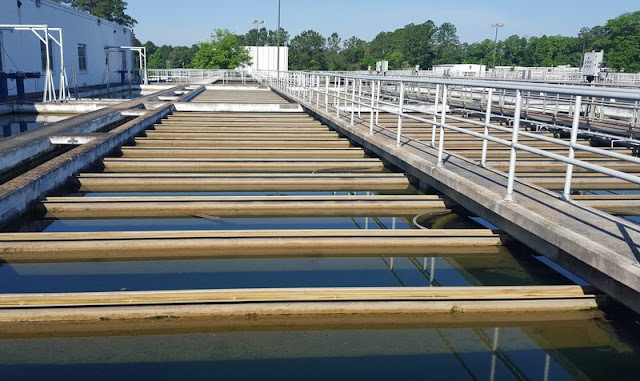After seeing some of the most famous sites around Savannah, we wanted to show Denisa's Mother how we explore the lesser-known places in a city. Knowing that we love a good factory tour, we had several interesting ones planned. One was at the Savannah Bee Company, where we first learned about the job of each bee from watching a hive inside the store. The bees can come and go through a tube in the wall attached to the hive.
After our orientation, in which we got instructions about not slapping a bee that lands on us, we got outfitted for our visit to the hives. We were pretty excited to get our very own bee-keeper hats.
Our tour guide was a self-proclaimed bee geek. That would be a "beek" for short. He opened the first hive to show us a unique triangular bee hive swarming with the female worker bees. Obviously, professionals don't need protective gear, as our bee-whisperer spoke gently to the ladies making the honey.
Then we moved to a more traditional hive, where our beek started a fire with pine needles to smoke the hive. We learned that bee keepers do this to mask the alerting pheromones that bees release to warn the others when the hive is disturbed.
He removed one of the frames and let us taste the honey directly from the comb. In our orientation we also learned we must remember to move our bee keeper hat out of the way before we lifted our fingers to our mouths for that taste. He has had to clean many hats with a single sticky spot because some tourists forget this important thing.
Back in the store, we also got to taste a long line of different types of honey. Everything from wildflower to palmetto honey, we purchased our favorite--citrus bloom honey. We found out that Denisa not only loves the smell of citrus blooms, but she also prefers honey made from them.
We were a little sad to have to leave our bee keeper hats behind, but we had other things to see and do.
Mark found that the Savannah Water Processing Plant has tours, and we were excited that we got one specialized for just the three of us. We got a deluxe tour of the process that the city of Savannah uses to make water from the Abercorn River ready for its customers' consumption. First there is the sedimentation process, where the water is pumped through a large number of pools to allow the sediment to fall from the water.
Then it goes inside the plant for the filtration process. As we imagined, everything was spotless inside. Chlorine and alum are added at different steps in the process as well.
Inside the lab, there are five faucets running from the five steps of the purification process. Because the water flowing from the river is a changing resource, the process also has to change when these tests come back differently.
We enjoyed meeting Laura Walker, who gave us a great tour of the surface water treatment plant. Laura is an awesome ambassador of the water department! She is standing in front of the department's new "critical workforce shelter," one of the best in the nation, and she let us tour it as well.
Several years ago, there was a hurricane in the area, and 250 of the water department's critical workforce were required to stay in the city to take care of any water issues after the storm. They found how uncomfortable it can be for 250 people to stay in a single room at headquarters for a couple days. So a federal grant helped them to finance this state-of-the art tornado and hurricane-proof building (once the windows and doors are covered by the attached metal plates).
Outfitted with 250 lockers, 250 beds, food to feed 250 people, and 5 days of diesel for the generator, it is ever-ready for the disaster that they hope never happens.
Our next factory tour was to a tiny community called Pinpoint. We toured the old factory where they used to can oysters in the winter, and crabs in the summer. Our tour guide is showing us one of the boats used for harvesting oysters from the surrounding salt water marshes.
He also educated three Oklahomans about different crabs. Because of its location deep in the marsh, this community of Pinpoint was secluded from the rest of Georgia. Living in the coastal plain where few roads connected them to the mainland, they even developed their own language known as Gullah/Geechee. He taught us a few of the words unique to the Gullah/Geechee community.
Our tour guide was raised in this unique community, and was part of the documentary we watched.
Another unique part of the community was the endearing nickname that each person was given. There was a collage of pictures of people from the community, paired with their Pinpoint nicknames. We took a picture of the community's most famous citizens. That would be Supreme Court Justice Clarence Thomas (aka "Boy") and his mother (aka "Pigeon").
We love the little things we learn as we wander through a new area, and it is fun sharing that with a loved one from home!

















No comments:
Post a Comment